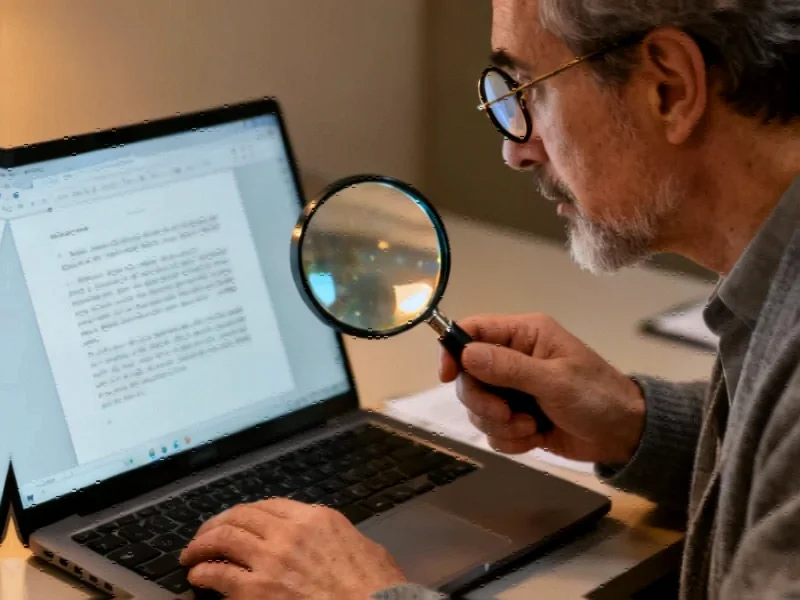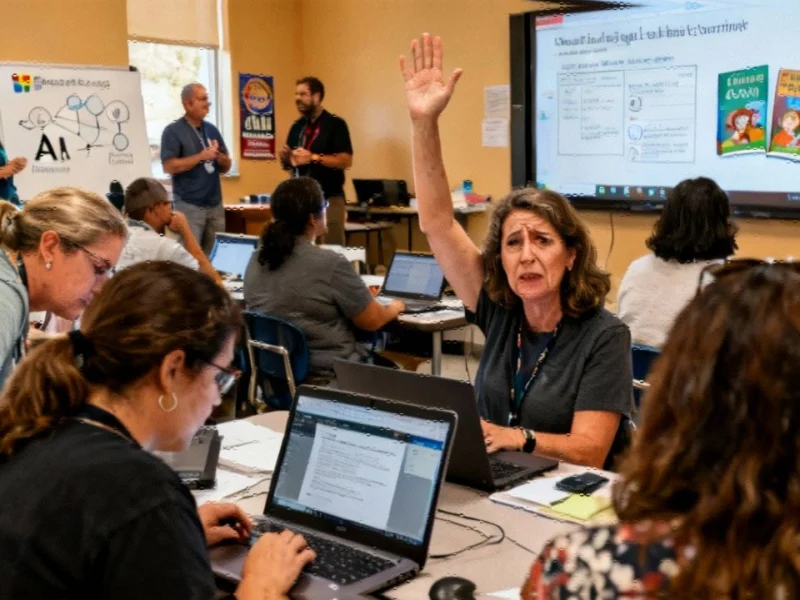The New Academic Reality: AI in Education
As artificial intelligence becomes increasingly integrated into educational environments, universities worldwide are facing unprecedented challenges in maintaining academic integrity while harnessing AI’s potential. The delicate balance between encouraging ethical AI use and preventing academic misconduct represents one of the most significant shifts in education policy in recent decades.
Detection Training: The Academic Arms Race
At De Montfort University, lecturers are undergoing specialized training to identify potential AI misuse in student work. Dr. Abiodun Egbetokun, associate professor of entrepreneurship and innovation, notes that as AI capabilities advance, detection becomes increasingly challenging. “We’re still in the take-off stage of AI,” he observes, highlighting the rapid evolution of both AI tools and detection methodologies.
Academic staff are learning to identify specific markers that might indicate AI-generated content, including unusual word repetition patterns, inconsistent writing styles, and certain punctuation characteristics. Brett Koenig, associate head of education in business and law, explains that while he sometimes gets a “gut feeling” about AI misuse, the training has provided concrete indicators to look for, such as excessive repetition of particular words like “fostering” that appear frequently in ChatGPT outputs.
Ethical Frameworks and Policy Development
DMU’s approach represents a growing trend in educational technology adaptation, where institutions are developing comprehensive AI policies rather than implementing outright bans. Shushma Patel, pro vice-chancellor for artificial intelligence at DMU, emphasizes that their policy encourages students to use AI to “support their thinking” while requiring transparency about how the technology was implemented.
The university distinguishes between proper AI use and misconduct, with the latter occurring when students submit AI-generated material as their own work or use AI to invent references. Jennifer Hing, academic practice officer, stresses the fundamental question students should ask themselves: “Is it your work? Is it your words? If it is not, then you’ve crossed a line.”
The Detection Dilemma and Technological Limitations
Despite the availability of AI detection software, DMU staff express significant reservations about its reliability. Dr. Ruth McKie, senior lecturer in criminology, recounts testing known human-written work through AI checkers that falsely identified it as AI-generated. In one notable case, a PhD thesis was flagged as “100% AI” despite containing no AI-generated content whatsoever.
This unreliability has led to cautious implementation of detection technology. As Koenig notes, “It’s as damaging to a student to falsely accuse them [of wrongful AI misuse] as it is to accurately say that they have committed plagiarism.” This perspective reflects a broader understanding within the institution that the goal should be education and adaptation rather than simply catching students in misconduct.
Global Context and Industry Implications
The challenges facing DMU reflect broader industry developments in educational technology worldwide. Universities are grappling with how to integrate AI responsibly while maintaining academic standards. The situation at DMU parallels other related innovations in technology integration across various sectors.
As Dr. McKie emphasizes, it’s crucial to “acknowledge the realities within society” that AI has become a “necessary tool.” This recognition is driving institutions to develop more nuanced approaches to AI in education, focusing on teaching ethical use rather than simply policing misuse.
Student Perspectives and Practical Applications
Students at DMU report using AI for various legitimate academic purposes. Yassim Hijji, a 19-year-old engineering student, uses AI to help with complex English vocabulary and translation from his native languages. “If it helps you to get better then why not use it? It’s like using a book at the end of the day,” he remarks.
Healthcare students recognize AI’s potential in their future professions. Jodie Hurt, a nursing student, notes there’s “definitely a place” for the technology in healthcare, particularly for documentation purposes. However, fellow nursing student Lucy Harrigan emphasizes the clear boundary between assistance and misconduct: “You can’t copy and paste, you can’t use it as a reliable source… It’s not showing your knowledge, you’ve got to earn your degree.”
Broader Technological Context
The evolution of AI in education occurs alongside other significant market trends in technology and energy. Just as educational institutions are adapting to new technological realities, other sectors are experiencing similar transformations driven by recent technology advancements and shifting operational paradigms.
These parallel developments highlight how technological adaptation has become a universal challenge across industries. The strategic planning required for integrating AI in education mirrors the careful consideration seen in industry developments in other sectors, where long-term planning meets rapid technological change.
Future Directions and Educational Evolution
The experience at DMU suggests that successful AI integration in education requires a multifaceted approach combining policy development, staff training, student education, and cautious technological implementation. As Dr. McKie notes, educators must understand why students use AI rather than automatically assuming misconduct: “We need to start figuring out why [it’s been used], we can’t just automatically assume that they’ve used it for the easy route out.”
This evolving educational landscape reflects broader societal shifts in how we interact with technology. The challenges and opportunities presented by AI in academia parallel those in other areas of related innovations and technological integration, suggesting that the lessons learned in educational contexts may have wider applicability.
As universities continue to navigate this new frontier, the focus remains on developing approaches that harness AI’s potential while preserving academic integrity—a challenge that will likely define educational practices for years to come.
This article aggregates information from publicly available sources. All trademarks and copyrights belong to their respective owners.
Note: Featured image is for illustrative purposes only and does not represent any specific product, service, or entity mentioned in this article.



